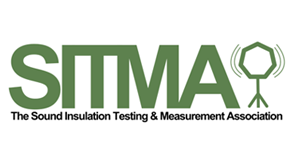Offices Nationwide

Environmental Noise Levels
According to the National Institute for Occupational Safety and Health, the maximum exposure time at 85 dBA is eight hours.
At 110 dBA, the maximum exposure time is one minute and 29 seconds. If you must be exposed to noise, it is recommended that you limit the exposure time and/or wear hearing protection.
A three dBA increase doubles the amount of noise, and halves the recommended amount of exposure time.



Sound Absorption
The loss of sound energy when sound waves come into contact with an absorbent material such as ceilings, walls, floors and other objects.



Sound Transmissions
Sound transmission paths can be interrupted by sound insulation and by blocking air paths. The sound insulation of a single leaf of a material is governed by its mass, stiffening and damping.
The sound insulation across a good conventional, lightweight, office to office construction is typically in the order of 45 dB Dw. This means that if the sound level in the source room is around 65 dB, (a typical level for speech) the sound level in the adjacent room, the receiver room, will be approximately 20 dB (barely audible). If sound levels are increased in the source room however, to 75 dB (raised voice), sound levels within the adjacent room will also increase to around 30 dB (audible). Sound insulation therefore describes the level of sound lost across a partition and not the level of sound within an adjacent room.
Dw represents the sound insulation between rooms on-site. Rw represents the lab tested sound insulation of an element making up a partition wall/floor type. Standards achieved in labs may not be possible on site because of the quality of workmanship and due to sound ‘flanking’ acoustic elements, that is, travelling around them through an easier path, rather than only directly through them as under lab conditions.
The building regulations part E sets minimum standards for design and construction in relation to the resistance to the passage of sound.



The Decibel Scale
The decibel scale gives an approximation of human perception of relative loudness. This is because the human ear has a logarithmic response to changes in sound level.
On the decibel scale, the smallest audible sound (near total silence) is 0 dB. A sound ten times more powerful is 10 dB. A sound 100 times more powerful than near silence is 20 dB.
The logarithmic nature of the dB scale means that each 10 dB increase represents a 10-fold increase in acoustic power. A 20 dB increase is therefore a 100-fold increase in power, and a 30 dB increase is a 1000-fold increase. However, an increase in acoustic power of ten times does not mean that the sound is perceived as being ten times louder. The ear perceives a 10 dB increase in sound level as only a doubling of sound loudness, and a 10 dB decrease in sound level as a halving of sound loudness.
The lower threshold of human hearing is around 5 dB. Normally speaking voices are around 65 dB. A rock concert can be around 120 dB.
Sounds that are 85 dB or above can cause hearing damage, and the higher the sound pressure, the less time it takes to cause damage. For example, a sound of 85 dB may take 8 hours to cause damage, whereas a sound of 100 dB may start to cause damage after only 30 minutes. A sound of around 150 dB can cause instantaneous hearing damage.


Copyright 2025 E2 Specialist Consultants Limited
Company No. 06728970

































